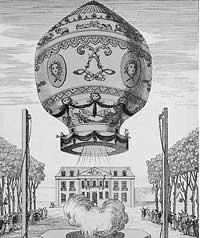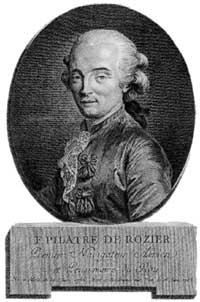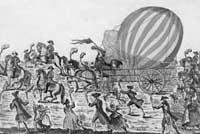The desire to fly became a crazy race
In 1782 to the industry Joseph Montgolfier and the French inventor invented the first balloons that rose in the air accompanied by his brother Etienne. The Montgolfier family had a trash can and, in addition to devising new types of paper for the home workshop, both brothers invented hot air balloons. After several attempts, in the French town of Annonay, they managed to raise the silk globe from about 10 m 3 to about 30 m high.

In the next session they managed to take off a balloon of 32 m 3. The first balloon was made in 1783, with 8.600 m 3 and managed to ascend to 400 meters high. The Montgolfier brothers thought it was time to publicly expose the invention, thus building a balloon of almost 10,000 m 3. A gondola was placed two columns and a caress to make fire, a paper lid was formed on the columns and a cotton cloth was formed. The balloon, which lasted ten minutes in the air, reached 2,000 meters high, fell on a meadow and burned. However, the Montgolfier brothers managed to register the invention at the French Academy of Sciences.
The achievement of the Montgolfier brothers launched an intense and crazy competition to fly. While Etienne Montgolfier was exhibiting his balloon in Paris, physicist Jacques Charles and the Robert brothers successfully made a hydrogen balloon built with silk and rubber. The balloon reached a height of 900 meters and traveled 25 kilometers. When the balloon landed, the monster fallen from the sky was attacked by several peasants in the area who completely ruined it by puncturing with the banks.
Before the end of 1783 new steps were taken. The Parisian physicist Francis Pilatre of Rozier volunteered to travel on the globe of Montgolfier, so Rozier wanted to be the first man to fly on the globe. A demonstration was held before Louis XVI of France. A hen, a duck and a sheep came up and took off. The flight lasted 8 minutes until the balloon fell and fell. Without rope, they offered the king the opportunity to be the first man to fly in balloon, but Louis XVI, seeing the flight of the hen, duck and sheep, preferred to renounce that honor.

With the Montgolfier balloons tied to the rope, Francis Pilatre de Rozier held several sessions. The first cordless manned flight did so when it felt like it was driving the globe in an unconscious way. The basket had three compartments: in one of them the burner was placed, Rozier the second and the third place was occupied by the Marquis of Arlandes, commander of the army. They took a 28-minute flight over Paris and climbed to 1,000 meters high. In addition, they managed to land without accidents in a vineyard located 5 kilometers from Paris. The peasants followed with distrust the flying dragon that had descended from the sky, and from Rozier and the Marquis of Arlandes took out the champagne to reconcile and celebrate the success of the flight. The custom of celebrating it with champagne after each balloon flight has come to this day.
The Montgolfier and Rozier brothers ended up with a feat in which their names appeared in history books. But the achievement did not paralyze the crazy flight race, it made it even more intense. Researchers, inventors and adventurers were there and here where the air will last the most, who will reach the farthest and who launched the biggest balloon. Fifteen days after the successful flight of the Marquis of Rozier and Arlandes, Jacques Alexander Charles and Nicholas Louis Robert left Paris with a gas balloon and traveled 20 kilometers on a two-and-a-half hour flight.
In their effort to make bigger and bigger balloons, the Montgolfiers built a giant balloon of 200,000 m 3. One of the biggest balloons in history. It was driven by Joseph Montgolfier himself, but only lasted 20 minutes, as a tear in the fabric made him land earlier than he expected.

In January 1785, Frenchman Jean-Pierre Blanchard and American John Jeffries, who left England on a hydrogen balloon and crossed the Manchego canal by air, arrived in France. This brand gave great fame to Blanchardi and Rozier, impassive by envy, who made him build a new balloon to travel from France to England. Hot air and hydrogen started from Rozier Franchy in January 1985 with the new balloon that combined both. After a few minutes of the flight the balloon was set on fire, where Francis Pilatre de Rozier, the first man to fly in balloon and the first to die in balloon accident, died.





